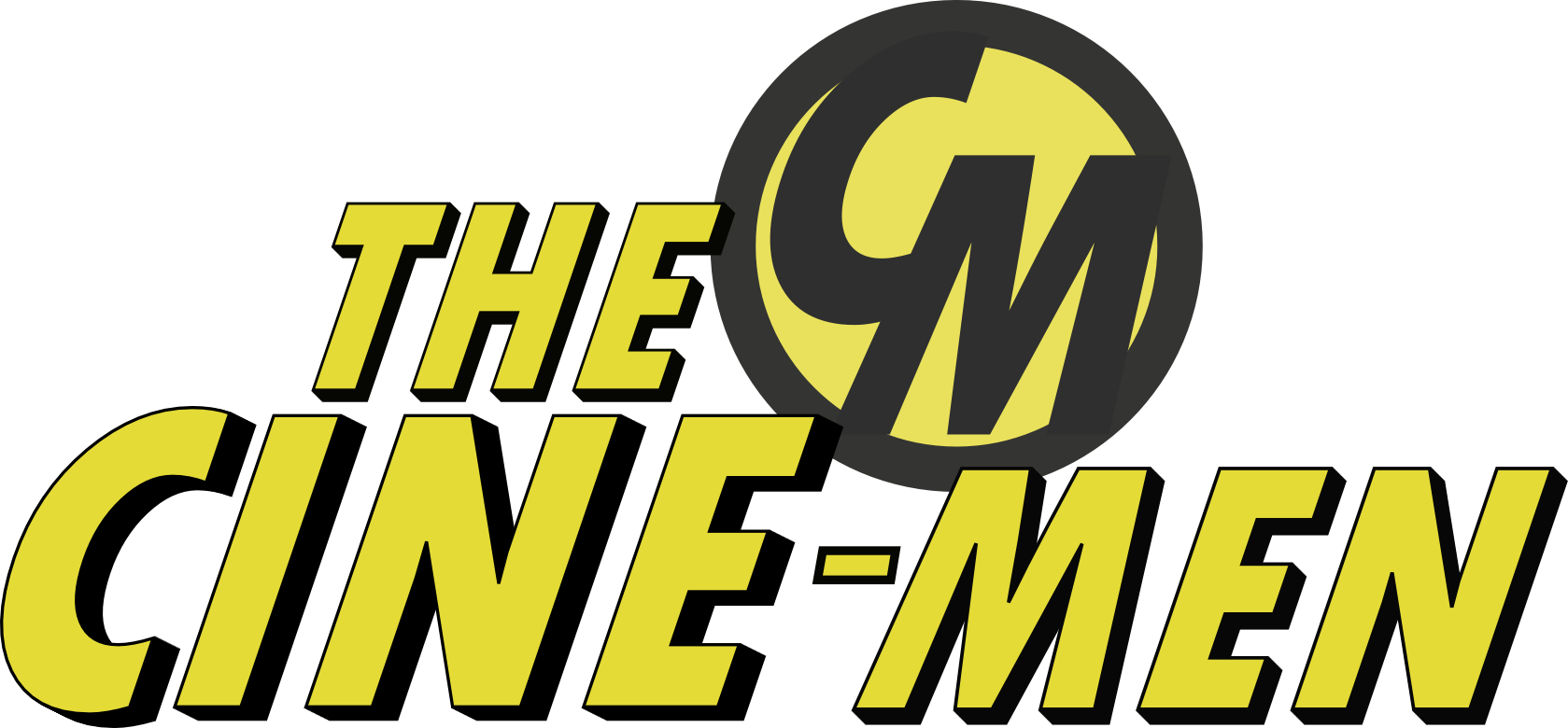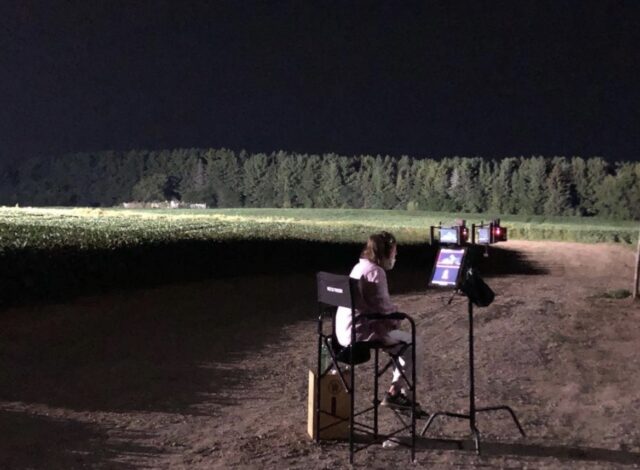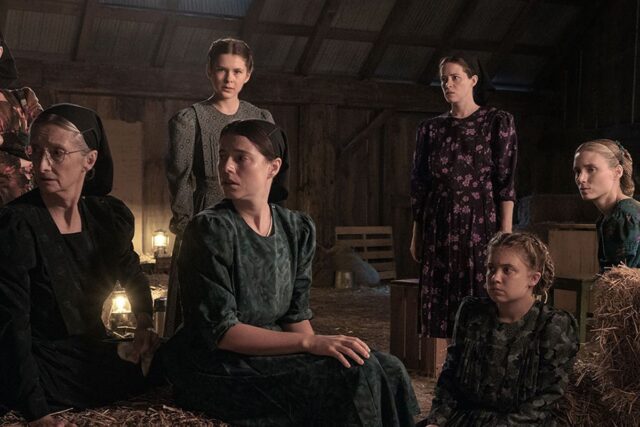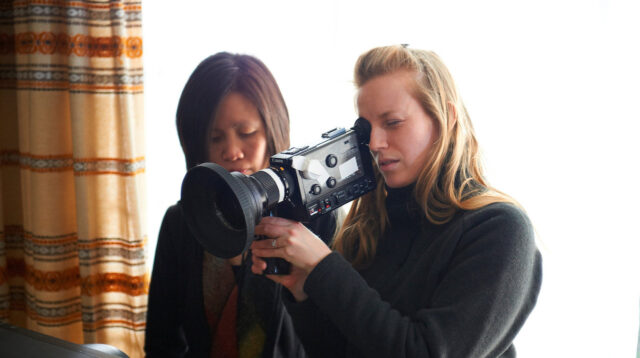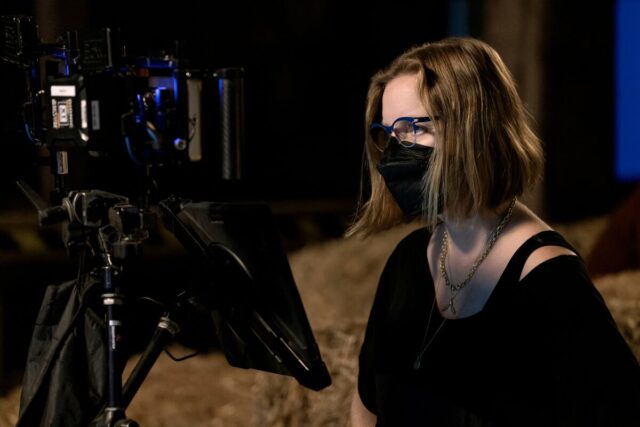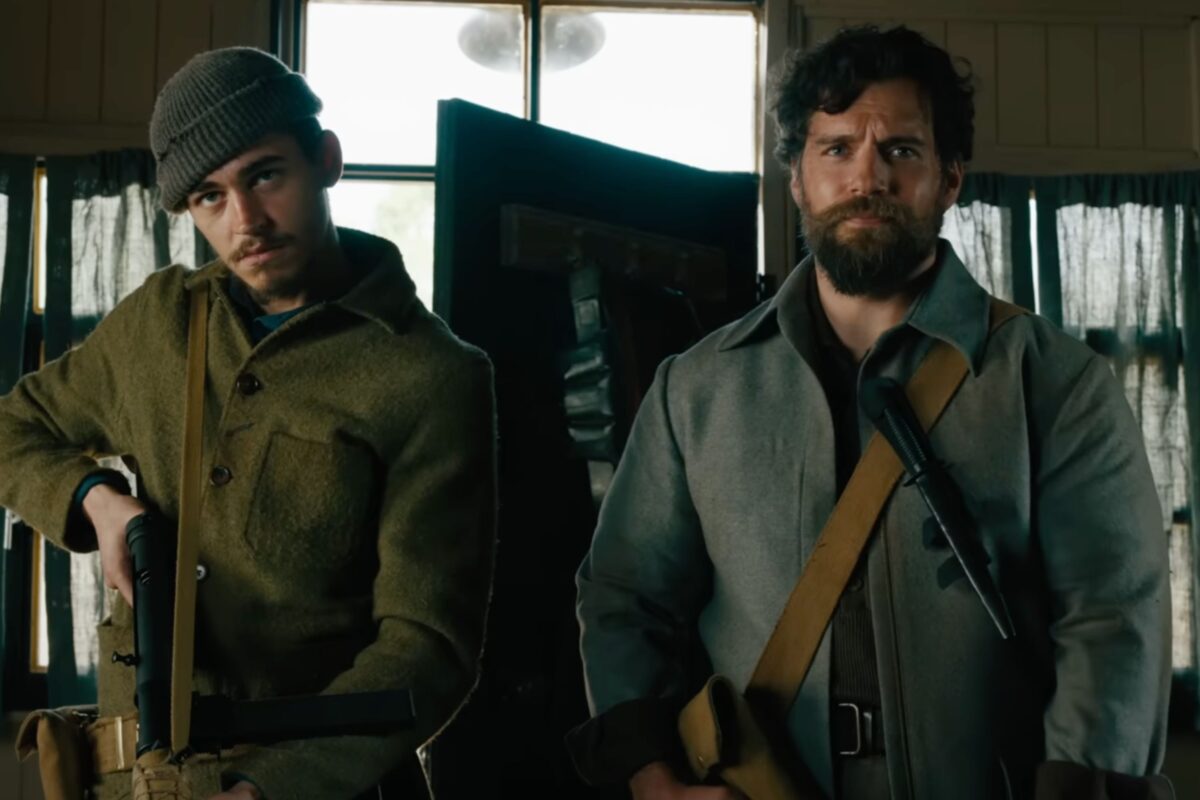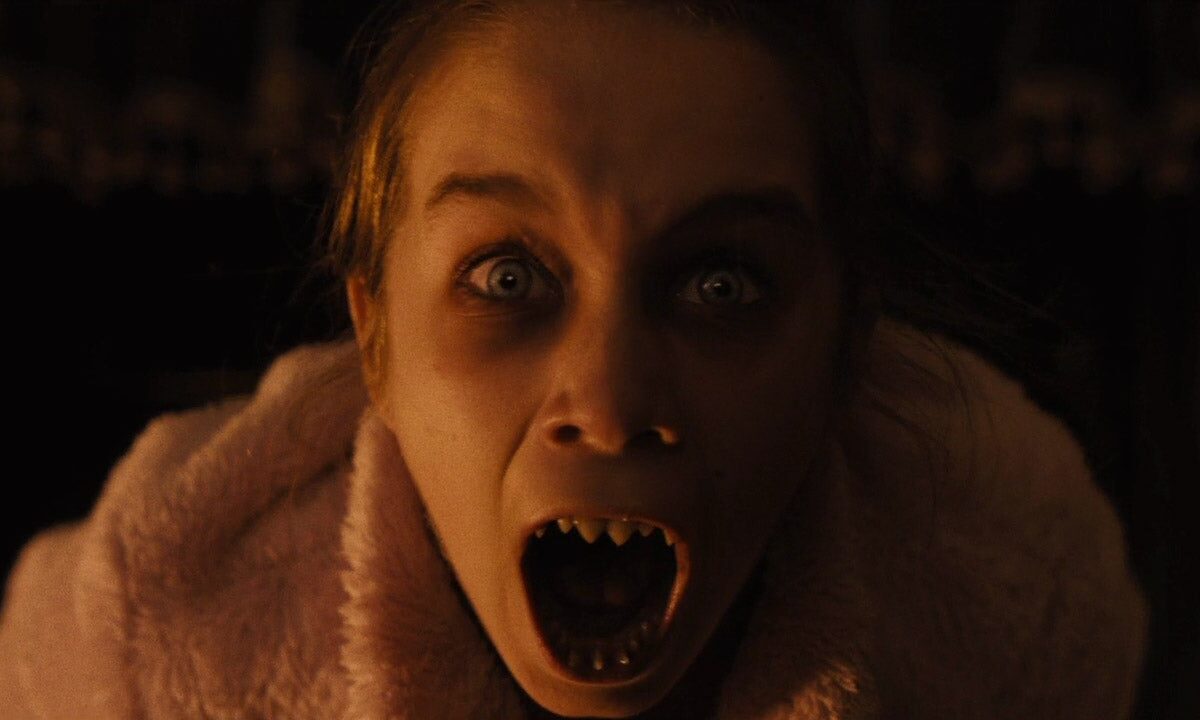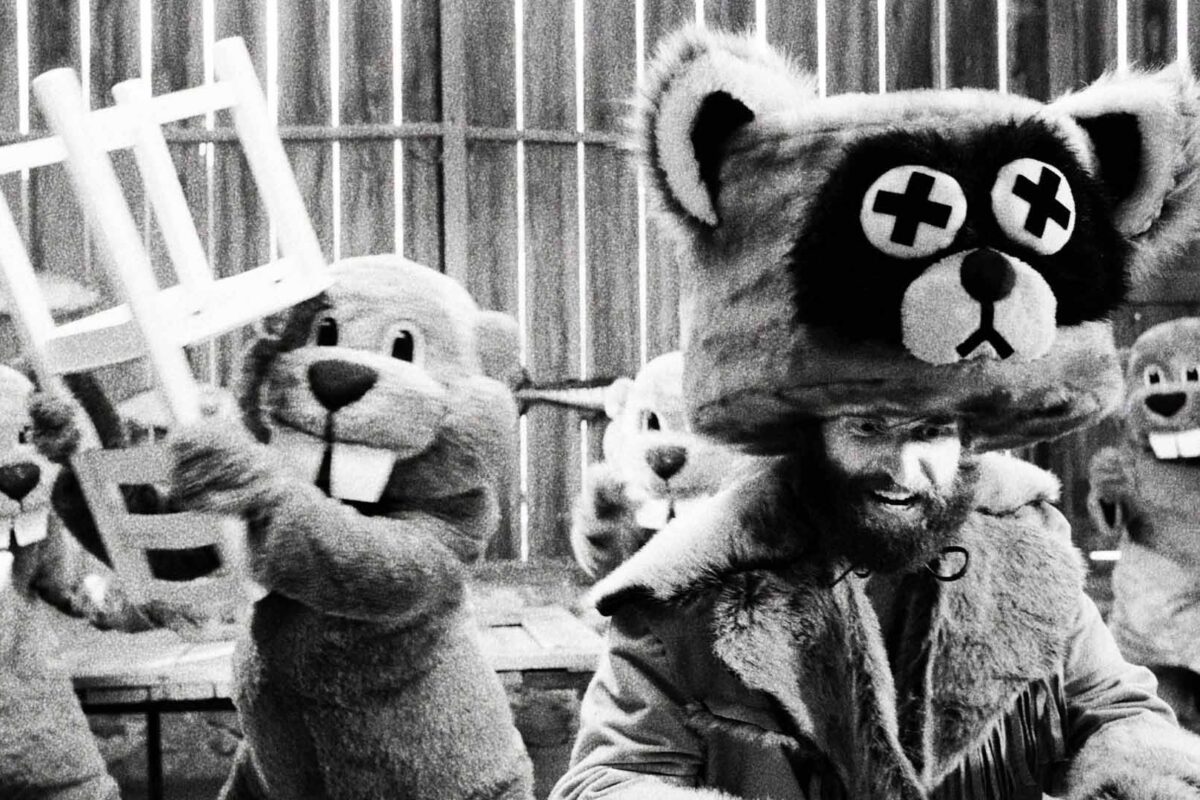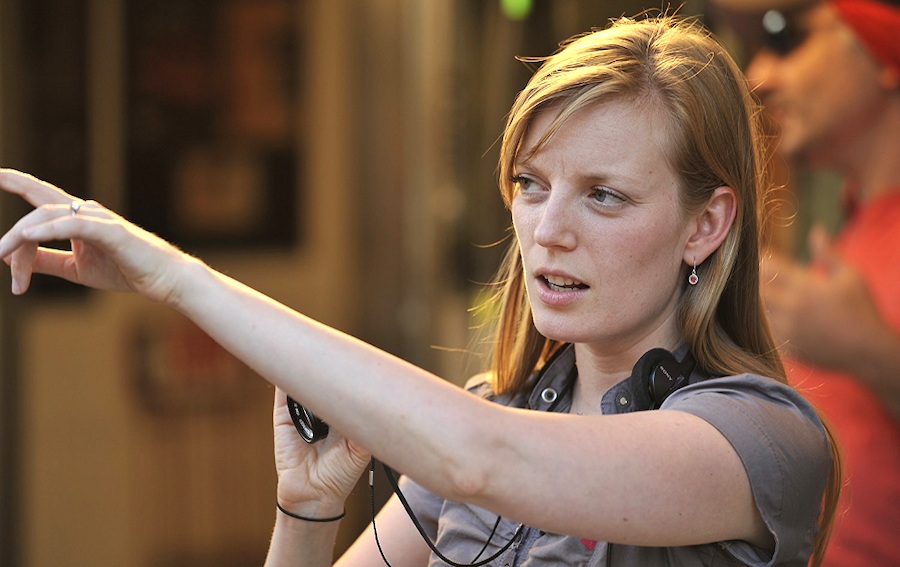
Brian: It’s been ten years since your last feature [Stories We Tell], what was it about Women
Talking that made you want to make it?
Sarah: I was sparked by this book [by Miriam Toews] in terms of so many big, huge,
philosophical questions that it asked. I was just so riveted by the sense of community with these
women and the way they have to deal with each other and make space for each other and have
a really rich difficult rigorous dialogue in order to move forward, so it was a bit of an experiment.
I couldn’t really think of a model of what this film was like but that’s always the most exciting
thing is when you feel like you don’t and you’re a bit in the dark and you’re a bit in the
wilderness and trying to make your own model and that was really exciting to me.
Brian: I really love films that are filmed in one location mostly.
Sarah: Uh-huh.
Brian: And so after seeing your film, and I saw The Whale, last night-
Sarah: Is that filmed in one location too?
Brian: Yeah, it was filmed in all one location as well.
Sarah: Wow. I didn’t know that.
Brian: It’s neat to see that.
Sarah: What other movies do you think of?
Brian: Well, you know, actually when I was watching your film, I noticed, I know it may sound
weird because they’re totally opposite, especially when it comes to sex, is Glengarry Glen Ross
Sarah: Yeah, yeah, totally.
Brian: I thought about that a lot when I was watching your film because the dialogue was so
good, and each of the characters, especially your actresses, were so strong. You know, you had
that group that was in that movie, a lot of them are legends now.
Sarah: Yeah I know.
Brian: Your actresses, I think a lot of them have, if not, are going to become legends. In Miriam
Toews novel, the story is told through the meeting notes, the Lowan Mill and the barn.
What made you want to change that for the film?
Sarah: So that was a decision that came really late. So, my idea was that it would be the same
narrator as it was in the book. It worked beautifully for me in the book that August was the
narrator. It was interesting, when we were cutting the film, when you sort of have that mediacy
and intimacy of sound in your ears and the images in front of you, how jarring it suddenly was to
have a man’s voice tell the story. And how clear it became to us after a few months of editing
that the biggest shift we needed to make was the narrator and to sort of radically change the
perspective of the film to that of the youngest woman in the room.
Brian: I would actually like to talk about the music in the film. The score’s great. But you also, a
lot of times, you don’t have music at all; there’s no score. It’s mostly during the scenes when
they’re in the barn that music seems to fade. Was there a choice in why you didn’t have a
score?
Sarah: Yeah, sure. I mean, that’s partly me and that’s also partly Hildur [Guðnadóttir]. Hildur is
not somebody who wants to lay and slather her music over every moment of a scene. I think it’s
really important with a score to leave those silences so that the score, when it comes in, like
you’re also hearing the silence you’ve come out of. So it was really important also that we not
be underlining, I think some of those conversations that those actors are playing on so many
levels of the same time and their forms are so intricate that I didn’t want to leave the
audience in terms of what we were underlining with score in those conversations. And also, so,
when it comes in, there’s a target point or there’s momentum.
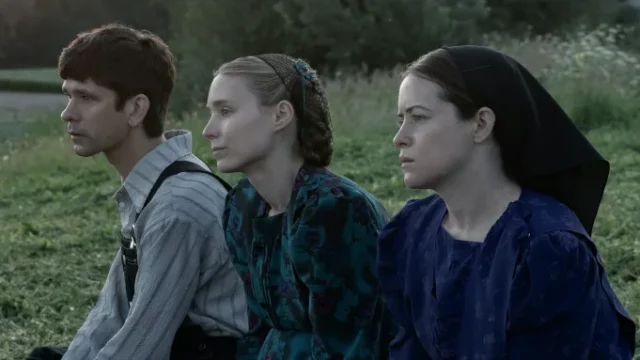 Brian: I appreciate that because in a lot of films, that score does lead you to what you should
Brian: I appreciate that because in a lot of films, that score does lead you to what you should
feel instead of just getting there naturally on what you should see. So I kind of see that.
Sarah: Yeah. Also, I also think that Hilder’s never going to want to impose herself on moments
that the score doesn’t belong.
Brian: There’s one pop song in the film and it’s “Daydream Believer” by The Monkees. Was that
your choice to put in the film and if it was, what was your reasoning?
Sarah: We played with a lot of different songs. It was always going to be a pop song, for a while
it was “California Dreamin’” [by The Mamas and The Papas], which is what it is in the novel. For
a while it was going to be a Sufjan Stevens song, I think “Chicago”. And when we landed on
“Daydream Believer”, it had this strange combination of sort of this lighthearted purely happy
quality and also this strange indifference to what the women in the film were going through. Like,
the sense that the outside world is just chugging along and also when and where are we
because I do think of this film as a fable, that it’s almost everywhere at the same time. But I also
feel like it’s interesting, people have very different relationships with that song in the film that I
kind of don’t want to lead them how it’s supposed to make them feel. Some people feel really
jarred and unsettled by it, some people love the break and embrace it wholeheartedly. One of
the greatest things about not test screening a movie is you don’t clear up the confusions. I think
that was a huge privilege on this film, is that no one made us test screen it which means there
are moments where people come at with completely different responses and if you had tested
that, you’d probably change those things so that everybody had the same response. Because
the idea of the disparity of an opinion or confusion is automatically thought of as a bad thing
opposed to “no actually that’s what I want when I leave a movie, I want to be argumentative with
my friends over the meaning of a moment.”
Brian: Exactly, I felt the same way. That’s why I love coming to these film festivals, so you meet
with like-minded people who love movies and you can walk out after a movie, as you wait two
hours between movies, you spend an hour and a half talking about the things you saw or the
thing you just saw. When you leave a normal theater, unless you’re with a friend, you don’t really
get that. Can we talk about the casting process? You got some fantastic actresses. Did they all
audition for specific roles or did you kind of match them as people came on with the roles?
Sarah: It was amazing, that casting process, because I would meet someone about one role
and end up being excited about them for another. I never really knew how people were going to
fit in and where. I mean, Rooney [Mara], I met with in the beginning of this process and we
talked about Salome, we talked about Ona, we talked about Mariche. I didn’t know where she
was going to go, I knew that I wanted her to be a part of this film. And then meeting with Claire
[Foy], I was very specifically meeting with her about Ona, and halfway through the meeting, I
was like “I feel like you love Salome” and she was like “I do, I love Salome” and I said “I feel like
you have more Salome in you than Ona” and she was like “Yes, I am, I agree with every word
she said”. So that was exciting because it was like yes, Claire’s the obvious choice for Ona but
that actually makes her way more interesting for Salome. You don’t want to cast actors based
on what you’ve seen them do or what you know they can do, you want to cast them based on
what they haven’t done yet and what they’d like to do. That was exciting. I think that Mariche
was an interesting character but because she’s so hard to play and so I think on the surface
unlikeable for so much of the movie until we kind of understand her. Most actresses were really
scared of that part and Jessie Buckley just ran straight towards it. It was so funny in that with
Jessie, she was the only actress who was pleased with Mariche which is so interesting because
I couldn’t even get an engagement on that part. It was interesting to see. It was a combination of
where people gravitated and how they interacted with each other, so I couldn’t really cast one
person until I cast everybody but at the same time it was such a delicate balance of chemistry.
Brian: Jessie’s amazing. She’s an amazing actress period, but she’s amazing in this film. Last thing I
want to ask you is what was, obviously this is an adaptation of the novel, what was your
toughest scene to write on the page and then what was the toughest scene to actually shoot?
Sarah: Let me think about that for a second. There’s a turning point in the film that isn’t in the
book that has to do with one character apologizing to another and, without giving too much
away, that ends up being the catalyst for the group, being able to move forward together is
somebody personally apologizing to someone for harm that’s been done in a way that they can
hear it and accept it and receive it. I had been doing a lot of thinking about and reading about
what a good apology looks like; I had been reading a lot of Harriet Lerner books and just
thinking really about what it means to apologize and what someone might need to hear in order
to move through something or past something. So I think writing that moment, because I knew it
was going to be pivotal, in terms of both the healing and the forward momentum of the
collective, was the biggest challenge but also the most exciting. And we were rewriting that right
up to the second we shot it.
Brian: And the toughest scene to shoot?
Sarah: For me, personally, was when Mejal has her fit because it was something that used to
happen to me when I was younger. So I found that I was so terrified leading up to the shooting
of that scene, that I would somehow not be able to do my job objectively. And it ended up being
completely fine. I mean it’s always the things that you are most fearful of that end up not being
the problem, it’s always the unexpected things that end up being the problem. But that was a big
challenge, just sort of revving up to capturing that on film.
Brian: The editing process is the last part of filmmaking, did you discover anything new about
the film during that process?
Sarah: Yeah. I think having made a documentary as my last film before this film was very very
helpful because I learned a kind of agility and flexibility that I didn’t have before. My films have
been very very close to the scripts that I shot in the past and this one was more like Stories We
Tell in terms of we found the film several times in the editing room and there are many different
films that could’ve been made from this and sort of landing on what the right one was for us was
a process. I think what I learned is to not be afraid of that, you know? I think that in the past
there’s been a sense of powerlessness when things aren’t going according to plan or when I feel
lost and I’m starting to think of that as an essential ingredient in the editing process now.
Brian: Well thank you very much for your time.
Sarah: Thank you so much, it was nice meeting you.
